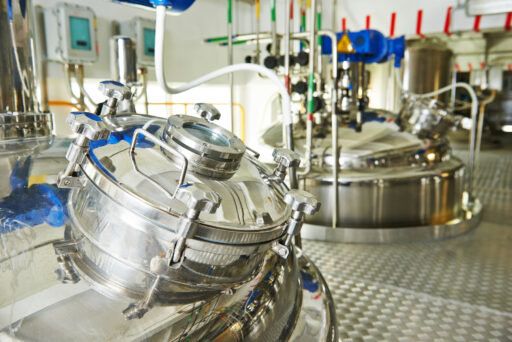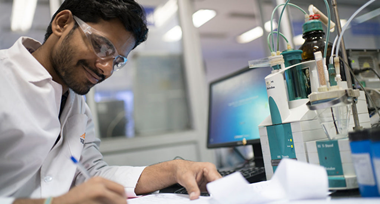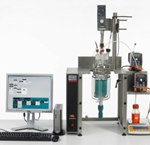 Drug developers know that processes which operate in a defined design space can be made more consistent, safer and less prone to deviation.
Drug developers know that processes which operate in a defined design space can be made more consistent, safer and less prone to deviation.
At Neuland, process development begins in the R&D laboratory with the application of rigorous scientific and engineering tools and methodologies, using Quality by Design (QbD) principles, risk management strategies, and Design of Experiments (DoE) to understand and control processes.
When applied to process development and scale-up, QbD focuses on five key issues:
· Critical Process Parameters (CPP)
· Critical Quality Attributes (CQA)
· Critical Material Attributes (CMA)
· Environment, Health & Safety (EHS)
· Project economics
The objective is to develop and scale a robust, reliable process and transfer it to the manufacturing facilities to ensure that quality product is delivered to our customers every time.
Putting QbD into practice
Over the past few years, we’ve expanded our capabilities and equipment with state-of-the-art instrumentation and automation to support QbD approaches with a dedicated Process Engineering (PE) Laboratory. Neuland’s PE Lab is staffed by highly qualified engineers and chemists who are trained in QbD and DoE.
The PE Lab utilizes two DoE software platforms:
- Minitab 20 Statistical software
- Design Expert statistical software from Stat-Ease Inc.
Based on experiments to identify the critical quality attributes (CQAs) of an active pharmaceutical ingredient (API) and the critical process parameters (CPPs), our scientists create a robust design space with flexibility built-in to maximize accuracy and reproducibility on scale-up and transfer to a manufacturing facility.
 Process monitoring and trend data are collected, analyzed, and used to develop a strategy for continuous process improvement in close collaboration with our customers.
Process monitoring and trend data are collected, analyzed, and used to develop a strategy for continuous process improvement in close collaboration with our customers.
The PE Lab also has provisions to assess the performance of processes in cylindrical reactors (using scale-down to mimic plant conditions). This can help avoid surprises when scaling up at the manufacturing plant due to potential differences when mixing in cylindrical reactors compared to round-bottomed flasks.
Process safety is critical
Robust process safety practices are essential for any process scale up. Our goal is to prevent the unintentional release of chemicals, energy, or other potentially dangerous materials during the course of chemical processes that can harm workers, equipment, a manufacturing facility, or the environment.
Engineers and scientists in the PE Lab design and conduct process safety studies to understand and assess the potential hazards in processes developed for our Custom Manufacturing Solutions (CMS), Generic Drug Substance (GDS), and Peptides business units.
The results of these studies can then guide the design and engineering of process controls and the development of a risk mitigation plan to reduce the chances for runaway reactions and ensure inherently safer processes at commercial scale.
Here are a sample of process safety practices and equipment commonly used in the PE lab.
Desk screening
Preliminary hazard evaluation/desk screening studies of the reactions are performed. This includes:
- Estimation of bond energies
- Estimation of oxygen balance, using a group contribution method
- Use of CHETAH software (ASTM international) to determine chemical thermodynamics
- Review of case studies from Bretherick’s Handbook of Reactive Chemical Hazards
- Performing a relevant literature search
Thermal screening
The PE Lab uses a Thermal Screening unit (TSu) to study the thermal stability of molecules at high temperatures. The TSu can assess the effects of elevated temperatures (process temperature + 100oC) on:
- Reaction mixtures
- Distillation residues
- Intermediates/final APIs
- Mother liquors (if recovered)
The TSu uses only approximately 0.5-5g of a sample. Screening studies evaluate the effects of the reaction initiation temperature on molecular stability and of pressure and heat release on chemical decomposition.
Reaction Calorimetry
 The reaction calorimeter in the PE Lab assesses the estimated energy released or absorbed during a chemical reaction. It measures:
The reaction calorimeter in the PE Lab assesses the estimated energy released or absorbed during a chemical reaction. It measures:
- Rate of energy liberation
- Enthalpy
- Specific heat capacity
- Adiabatic temperature rise
- Rate of gas generated
- Overall heat transfer coefficient (U) estimated from UA
This information is useful for understanding the severity of a chemical reaction and – based on the data – Neuland engineers and scientists can recommend control measures to be implemented at plant-scale to ensure inherently safer processes for producing commercial batches.
We’re a big proponent of data-driven approaches. The entire point of drug development is to maximize safety, accelerate development timelines and make the best possible decisions based on an appropriately designed experimental space. QbD fills this vital role of improving and accelerating drug development and commercialization projects.










